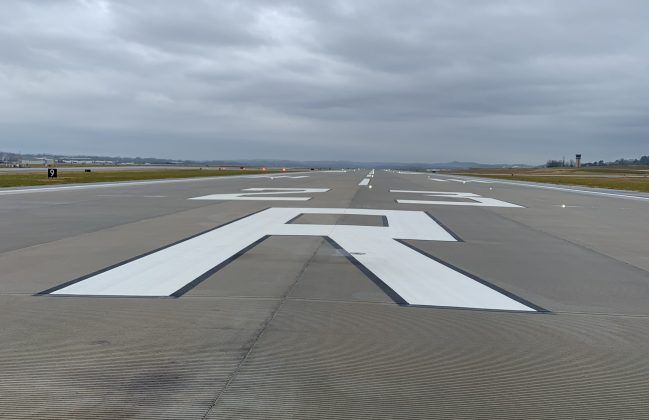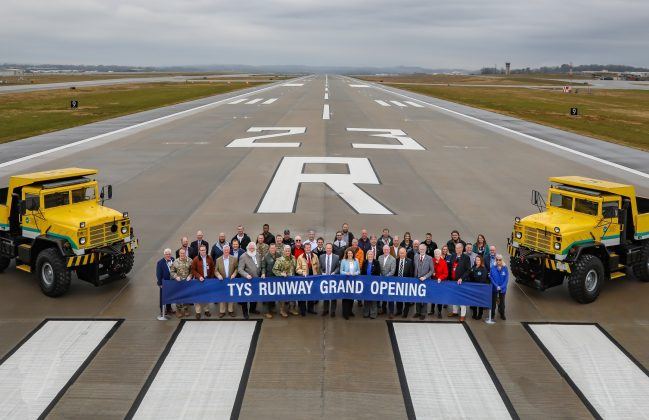McGhee Tyson Airport Runway
S&ME provided services for the reconstruction of Runway 5L-23R at the McGhee Tyson Airport beginning in 2015 and completed in 2021. The project involved relocating a city roadway; moving more than 1 million cubic yards of earth; completely replacing the storm drain system; relocating a gas main; installing new, LED lighting circuits for more than 5,000 airfield lights; reconstructing a new 10,000 ft runway; installing new navigational aids, and construction of a new electrical vault.
The $134 million project was funded by multiple partners, including the Federal Aviation Administration, the Tennessee Department of Transportation, the Air National Guard Bureau, and the Metropolitan Knoxville Airport Authority. The project required six years of design and planning and six years of construction; a design concept that will last the airport over 50 years.
As an all-weather runway, planes can take off and land in rain, snow, fog, or sunshine. In addition, the new 10,000 ft runway will allow heavier planes to take off from the Knoxville airport. It will also allow those planes to remain in the air for longer periods and make for fewer connections out of McGhee Tyson and more direct commercial flights. All concrete from the previous runway was recycled as a filler in the new runway, reducing the project’s environmental impact.
During the project, S&ME performed the following services:
- Laboratory Testing in Support of Field Density Testing
- Proofrolling Observations
- Field Density Testing of soil, lime stabilized soil, cement-treated base, aggregate base course, and recycled concrete base course
- Concrete Sampling and Laboratory Testing for the following:
- Lean concrete base (made from crushed concrete recycled from the old runway)
- Cement treated permeable base
- Portland cement concrete pavement
- Structural concrete
- Asphalt Plant Observations and Testing
- Special Inspections for the following:
- Soils
- Concrete Construction
- Masonry Construction
- Structural Steel
- Geotechnical engineering
- Construction Induced Dropout Observations and repair recommendations
- Stormwater sampling
- Observations during removal of two underground storage tanks, relic fuel conveyance piping, and groundwater monitoring and extraction wells




